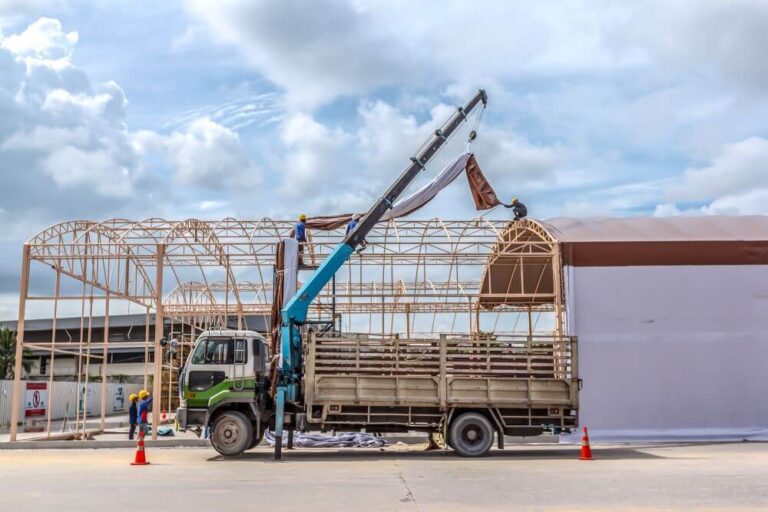Running a worksite in a remote or industrial location comes with a long list of challenges. You often face limited infrastructure, harsh environments, and the constant pressure to keep projects on schedule. Traditional buildings take too long and cost too much to make sense in these situations. That’s why more companies now rely on fabric structures as practical and flexible solutions.
Quick and Efficient Setup
Speed matters when you’re managing tight deadlines and shifting priorities. You’ll find that a commercial fabric building offers an immediate advantage for remote or industrial worksites. Unlike permanent facilities that require months of planning and construction, these structures can be assembled quickly with minimal equipment. Their installation speed keeps your projects moving without expensive delays.
Flexibility is another advantage. You can install portable fabric structures on uneven ground, frozen soil, or even desert sand without major site preparation. Once assembled, they’re easy to expand or relocate if your operations change. That means you can adapt without sacrificing valuable time.
When projects wrap up, removal is just as fast as installation. You don’t have to deal with demolition or the wasted costs of abandoning a structure. Instead, you can take it down, transport it, and reuse it somewhere else. That kind of efficiency is exactly what makes them a smart choice for dynamic worksites.
Cost Savings Compared to Traditional Buildings
Managing budgets is always a concern, especially in remote and industrial projects. Fabric structures stand out because they cut expenses in several practical ways. Here are the main areas where savings show up:
- Reduced labor and material needs during setup lower upfront costs.
- Reusability lets you move the same structure across projects for added value.
- Minimal upkeep means fewer repairs and lower long-term expenses.
- Clear cost-saving features help you stay flexible with your budget.
Together, these savings create real financial breathing room so you can put resources toward critical operations and growth. Strong financial discipline at the project level mirrors broader financial fitness strategies that businesses use to remain agile and competitive.
Environmental and Sustainability Benefits
Sustainability is now a top priority for many industries. Fabric structures align well with these goals. They use fewer materials than traditional construction and generate less waste. That reduces the environmental impact right from the start.
They’re also energy-efficient. Translucent membranes let in daylight, cutting down on the need for electric lighting. When paired with efficient HVAC systems, they reduce overall energy consumption. This not only saves money but also supports eco-friendly solutions.
Because they’re reusable and portable, fabric structures also reduce the demand for new construction on each project. Reusing the same building multiple times means less resource consumption overall. It’s a practical way to combine efficiency with sustainability.
Adaptable to Harsh Environments
Industrial and remote worksites don’t always have friendly weather. From heavy snow to harsh weather conditions, environments can put people and equipment at risk. Fabric structures are built to withstand these challenges. High-quality materials resist damage, hold up against strong winds, and manage heavy snow loads.
Many companies choose tension fabric structures for added durability. They provide extra strength without weighing down your site with heavy materials. Optional liners, HVAC systems, and vents also maintain safe and stable interiors.
What makes fabric structures especially practical is their resilience over time. They don’t rust, rot, or degrade as quickly as some traditional temporary shelters. That gives you confidence that your operations will continue without sudden interruptions or costly repairs.
Worker Comfort and Productivity
Productivity depends on worker well-being. Fabric structures are designed with comfort in mind. Natural light filters through translucent membranes, reducing the need for artificial lighting. Ventilation systems keep air fresh, while insulation and climate controls maintain stable temperatures.
When workers feel comfortable, they perform better. Stress drops, morale improves, and overall employee engagement increases, leading to stronger performance across the site. A healthy work environment is more than a benefit, it’s a key driver of efficiency.
The open, spacious layouts also help workers move around easily. Large equipment can be housed without crowding, and safety is improved when pathways are clear. These clear span structures provide layouts that enhance jobsite efficiency.
Flexible Space for Multiple Uses
One of the biggest strengths of fabric structures is their adaptability. Instead of building several facilities, you can rely on one structure that serves many roles. Common uses include:
- Workshops for daily repairs and maintenance.
- Storage facilities for equipment, tools, and vehicles.
- Workforce housing that keeps staff safe and comfortable.
- Dining halls, offices, or recreational areas.
- Medical stations that ensure quick access to care when needed.
With so many uses available, you can reduce costs and simplify logistics without sacrificing essential services on-site.
Conclusion
Choosing the right structures for demanding worksites is about more than practicality. It’s about giving your team the support they need to stay safe, productive, and confident in their environment. With thoughtful planning and reliable solutions, you can turn even the toughest locations into places where work flows smoothly. The result is a stronger foundation for both immediate success and future growth.

